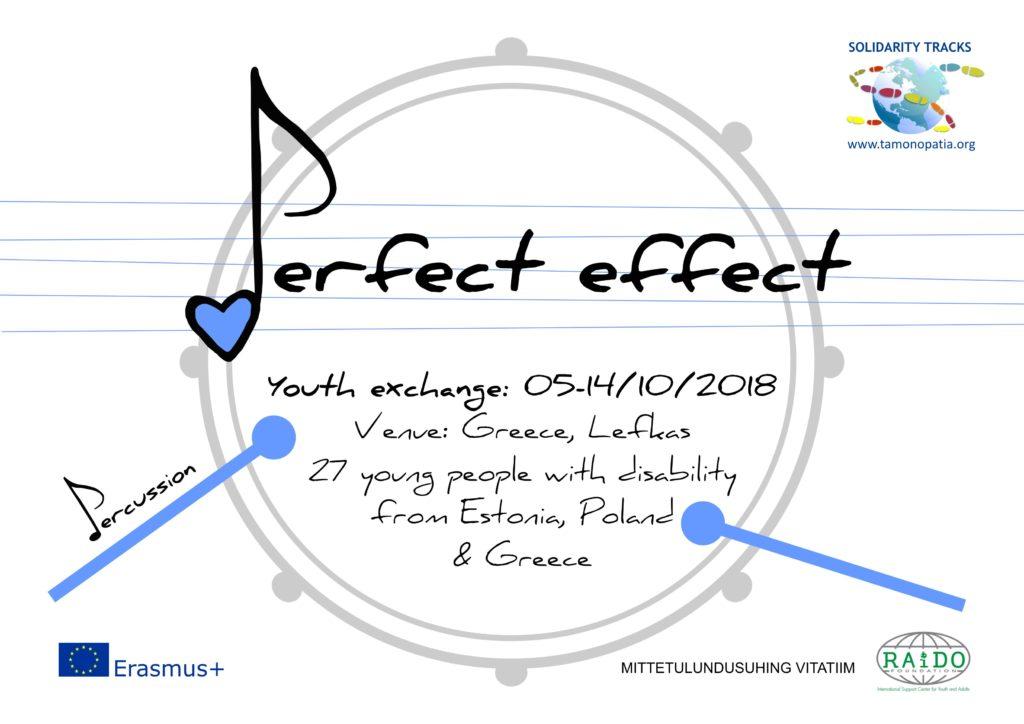
Rhythm is an integral part of the music and the communication. It is a rich and open language and, beyond this, universal process of collective exchange which is to be found in all cultures of Mankind. Practicing percussions brings about multiple advantages at the social, affective, psychomotor and cognitive levels. Besides, practicing percussions can contribute to the intercultural exchange and the social inclusion by bringing together different publics, characterized by different abilities and origin. By means of practical experiences relating with the percussion, the young people can better manage their emotions, and relax as well as develop artistic abilities and acquire their knowledge about the artistic and cultural heritage of other countries. Within this context, we organized this youth’s exchange program which involved 27 young people, aged 18-30, having a mental or physical handicap including deaf-mute people. These young people originate from Greece, Estonia, and Poland and the program lasted 8 days on the island of Lefkas (Greece). It was a 3-party project which offered a friendly and intercultural ambience to young people with social needs and with difficult or no access to the international mobility programs. During this exchange, the young beneficiaries commonly engaged in percussion and benefited from the numerous advantages inherent to it such as greater openers to other people, a better self-esteem and a stronger feeling of belonging to a group. By focusing on the tones and the resonances produced by each member of the group, these young people attuned and externalize their own rhythmic expression thru a common music practice which has to do with pleasure, creativity, exchange as well as listening to and respecting the Other. In the course of this exchange, the young people created their own percussion instruments based on some objects retrieved from litter. This process was not only an artistic quality but also a sustainable action which recycles objects abandoned for good. By modifying these objects’ initial utility, the young participants developed their skills of manual creativity and their rhythmical and musical capabilities; they also contributed to the protection of the environment.
